Top News
Online healthcare marketplace MDsave receives a $12 million investment from private equity firm MTS Health Investors, and adds MTS Partner Oliver Moses to its board. The company will use the funds to bolster its platform, which offers cash-paying consumers access to negotiated savings on bundled healthcare procedures like office visits, imaging, and surgeries.
Webinars


May 19 (Tuesday) 2:00 ET. “Lock the Windows, Not Just the Door: Why Most Healthcare Breaches Involve Phishing Attacks and How to Prevent Them.” Sponsored by Imprivata. Presenters: Glynn Stanton, CISSP, information security manager, Yale New Haven Health System; David Ting, CTO, Imprivata. Nearly half of healthcare organizations will be successfully cyberhacked in 2015, many of them by hackers who thwart perimeter defenses by using social engineering instead. The entire network is exposed if even one employee is fooled by what looks like a security warning or Office update prompt and enters their login credentials. This webinar will provide real-world strategies for protecting against these attacks.

May 20 (Wednesday) 1:00 ET. “Principles and Priorities of Accountable Care Transformation.” Sponsored by Health Catalyst. Presenter: Marie Dunn, director of analytics, Health Catalyst. Healthcare systems must build the competencies needed to succeed under value-based payment models while remaining financially viable in the fee-for-service landscape. This webinar will outline key near-term priorities for building competency at successfully managing at-risk contracts, with a particular focus on the importance of leveraging data to drive effective decision making.
Tweet Chat

Amanda Greene (@LAlupusLady) will host the next #HIStalking tweet chat on Thursday, May 14 at 1pm ET. As a lupus sufferer, she’s is particularly excited about hosting during Lupus Awareness Month. You can view discussion topics here.
Acquisitions, Funding, Business, and Stock

Grand Rounds opens its Sierra Patient Center in Reno, NV, where it expects to fill 200 jobs over the next several years. The San Francisco-based business offers a technology platform that helps consumers seek counsel and connect with leading physicians of various medical fields in order to get more accurate diagnoses and treatment, typically through an employer. The company also offers “Record Specialists,” which collect and digitize medical records for customers – a service I’m sure many of us would prefer to pawn off on a third party if we were so financially inclined.
PM and consulting firm Medical Revenue Systems opens an office in Kingwood, TX.
Telemedicine

The Colorado Rural Health Center selects video-conferencing and decision-support software from Script Adviser to help improve infectious disease treatment in rural parts of the state.
The American Telemedicine Association calls the latest iteration of the 21st Century Cures bill a disappointment in its lack of telemedicine provisions. “The new version of the bill leaves the Medicare program in the slow lanes while states, private payers and every other developed nation are quickly adopting the use of technology to transform the delivery of health care,” explains Jonathan Linkous, ATA CEO. “It is ironic that a bill titled the 21st Century Cures will leave Medicare and Medicaid patients firmly in the 20th Century when it comes to delivering healthcare.”
Government and Politics
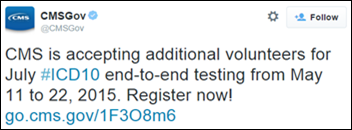
CMS looks for 850 volunteers from a range of provider and claim types to participate in ICD-10 end-to-end testing with Medicare Administrative Contractors and the Common Electronic Data Interchange contract the week of July 20. The agency will accept volunteers through May 22.
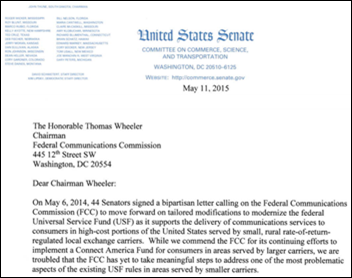
Sixty-one senators write FCC Chairman Tom Wheeler (nearly 20 more than signed a similar letter in 2014) asking for modernization of the federal University Service Fund, which helps bring broadband to rural communities. The program includes the $400 million Healthcare Connect Fund, criticized for its inefficiencies in helping providers adopt broadband. (For any AP sticklers out there, “POTS” is apparently an acceptable abbreviation for “plain old telephone service.”)
Politico points out during National Women’s Health Week that the VA is still implementing a 2013 recommendation that it develop a process for notifying patients of cervical cancer screening results and documenting those results in the department’s EHR. The lag time highlights the more systemic challenges the VA faces when it comes to providing healthcare services for an increasing number of female vets.
Announcements and Implementations
The Minnesota Radiological Society partners with National Decision Support Co. to offer eligible physicians free access to NDSC’s ACR Select portal, the Web-based version of the American College of Radiology Appropriateness Criteria. The portal, which can be integrated into an EHR, offers clinical-decision support and meets state payer preauthorization requirements.
Research and Innovation
A Twitter analysis finds that physicians tweet nearly 400 messages a day relating to cancer, with messaging related to breast, lung, and prostate cancers making up the bulk of information shared. More than 5,000 providers contributed to the social dialogue in 2014, with a small group of “superusers” doing a big chunk of the tweeting. Researchers surmise that further analysis is needed to determine the influence these social networkers have on information flow to colleagues and patients.
Other
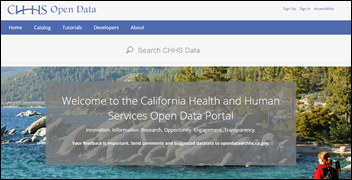
Techwire takes a look at the many projects and possibilities of the California Health and Human Services Agency’s Open Data portal ahead of the National Day of Civic Hacking: Health 2.0 Developer Challenge in early June in Sacramento. The portal includes data sets, charts, and maps on population health indicators, facility performance, and access to services, among other categories. The competition will award a total of $20,000 to teams that harness the data sets to raise consumer and policymaker awareness around healthcare issues.

New technologies presented at Elsevier’s 4th International Conference on Bio-Sensing Technology may soon make today’s wearables look like the rotary dial phone gathering dust in my parents’ basement. Scientists presented a credit card-sized device that consumers can use to analyze blood and saliva samples. Results can then be sent to an app or potentially an EHR. A new e-skin was also showcased, touting the ability to diagnose disease in real time and provide instant health assessments while being worn. Innovations like these make devices like the Apple Watch look quaint by comparison.
Contacts
Jennifer, Mr. H, Lorre, Dr. Jayne, Dr. Gregg, Lt. Dan
More news: HIStalk, HIStalk Connect.
Get HIStalk Practice updates.
Contact us online.
Become a sponsor.

Shaun Ginter is CEO of CareWell Urgent Care, a chain of 10 urgent care facilities in Massachusetts and Rhode Island that serves 130,000 patients each year. The organization is in the midst of migrating from an EHR that did not support Meaningful Use attestation to Athenahealth’s platform. As Ginter explains it, “The MU attestation process requires registration of all the physicians under CareWell. Providers who have registered elsewhere can take more than a year to change their attestation site. Because we are a new company and many physicians are new hires from other sites, this has been a work in progress. The goal is to have all the full time providers in the process at year’s end.”

You have a history of working in the retail pharmacy/urgent care space. How have you seen technology help these types of healthcare facilities evolve into more consumer-focused businesses?
Yes, in the past decade there have been many innovations in technology and new products that help us focus on the consumer. These include marketing tools, consumer-friendly websites (mobile and PC), online appointments, social media, merchant services, customer satisfaction survey tools and many others.
What EHR vendor did you switch from? Why the decision to change, and why specifically go with Athenahealth?
We moved from a vendor that had a product built with the EHR in mind and less focus on the PM side of the house. We still have a good working relationship with them. We have a large focus on the business analytics, performance metrics, and revenue cycle management side of the equation. Based on our research and due diligence, Athenahealth was able to satisfy all our requirements and then some.
How do you believe cloud-based solutions will help urgent care facilities better manage population health as part of the broader continuum of care?
Cloud-based systems provide urgent care centers with a level of sophistication that comes from a full understanding of the healthcare landscape throughout the country. Athenahealth has thousands of interfaces that allow our EHR to communicate with just about any system in use today.
Do you foresee CareWell tapping into local/regional HIEs?
Yes, we are currently working on connecting to the Mass Highway. which will allow us to share information on our patients through this HIE. With our new EHR, we also have the opportunity to connect directly to any health systems or large groups using preexisting interfaces.
What are your thoughts on the state of interoperability as it relates to urgent care? Do you foresee organizations like CareWell becoming a part of groups like CommonWell?
Urgent care providers around the country are looking at ways to move forward with interoperability. The challenges we all face are the costs of this technology and the understanding of how interoperability will improve the care of our patients in the long run. We do not know enough specifically regarding CommonWell. However, if we can determine that system interoperability can and will improve patient outcomes then we would consider it. There is good potential with these systems; we just don’t know enough about them as of yet.
Contacts
Jennifer, Mr. H, Lorre, Dr. Jayne, Dr. Gregg, Lt. Dan
More news: HIStalk, HIStalk Connect.
Get HIStalk Practice updates.
Contact us online.
Become a sponsor.

Top News
MinuteClinic announces it has seen over 25 million patient visits since it first opened in 2000. Acquired by CVS Health in 2006, the retail clinic now has 1,000 locations in 31 states, with plans to surpass 1,500 by 2017. It is in the midst of rolling out Epic’s EHR across all of its sites.
Webinars


May 19 (Tuesday) 2:00 ET. “Lock the Windows, Not Just the Door: Why Most Healthcare Breaches Involve Phishing Attacks and How to Prevent Them.” Sponsored by Imprivata. Presenters: Glynn Stanton, CISSP, information security manager, Yale New Haven Health System; David Ting, CTO, Imprivata. Nearly half of healthcare organizations will be successfully cyberhacked in 2015, many of them by hackers who thwart perimeter defenses by using social engineering instead. The entire network is exposed if even one employee is fooled by what looks like a security warning or Office update prompt and enters their login credentials. This webinar will provide real-world strategies for protecting against these attacks.

May 20 (Wednesday) 1:00 ET. “Principles and Priorities of Accountable Care Transformation.” Sponsored by Health Catalyst. Presenter: Marie Dunn, director of analytics, Health Catalyst. Healthcare systems must build the competencies needed to succeed under value-based payment models while remaining financially viable in the fee-for-service landscape. This webinar will outline key near-term priorities for building competency at successfully managing at-risk contracts, with a particular focus on the importance of leveraging data to drive effective decision making.
I had a nice chat with Regina Holliday in our most recent webinar. We had a chance to discuss the evolution of the patient advocacy movement in health IT circles, next steps for The Walking Gallery, and the best ways for patient advocates to be effectively disruptive at large industry events.
Tweet Chat

Amanda Greene (@LAlupusLady) will host the next #HIStalking tweet chat on Thursday, May 14 at 1pm ET. As a lupus sufferer, she’s is particularly excited about hosting during Lupus Awareness Month. You can view discussion topics here.
Announcements and Implementations
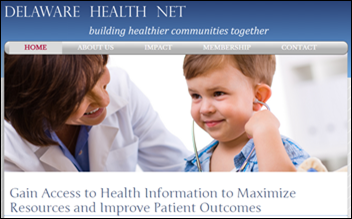
Non-profit Delaware Health Net selects SA Ignite’s MU Assistant software to help its FQHCs access quality performance data within their respective EHRs, and improve their ability to monitor Meaningful Use attestation progress.
In other Delaware news … Aledade announces that its Delaware-based ACO has doubled in size to 24 doctors in the first four months of this year. The ACO, whose daily operations are managed by Quality Insights of Delaware, now covers 18,000 Medicare patients.
Alliance Health and Amiigo partner for a new chronic care management program, which will merge patient data collected using Amiigo wearables with patient-reported data gathered through Alliance Health’s social networking platform. The data will then be shared with care teams in an effort to reduce treatment costs and improve outcomes. The companies are working on a pilot program focusing on 300 patients who are at-risk for cardiovascular events.
Telemedicine

Dean Lewis (University City Science Center) joins MyTelemedicine.com as CFO and COO.
Government and Politics
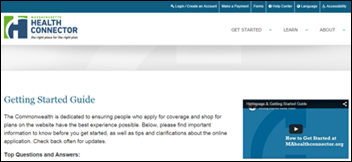
Massachusetts Governor Charlie Baker deals with fallout from a Pioneer Institute study that contends the state’s administration acted illegally in attempts to cover up the disastrous rollout of its health insurance exchange in 2013. Comments from anonymous whistleblowers that worked on the rollout of the Health Connector site are peppered throughout the report, including gems like this one: “It’s like when you’re a kid and you do something wrong and you are waiting to be caught. We were waiting for people to realize how bad this was.”
Research and Innovation
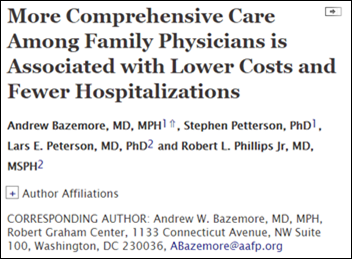
An AAFP study finds that family doctors who provide more care themselves, rather than passing it off to specialists, reduce hospitalizations and healthcare costs. The study also found that physicians who performed a wider range of services reduced overall patient costs by between 10 and 15 percent. Accompanying commentary notes that, “This probably trumps any other innovation in terms of reducing Medicare costs.”
A survey of clinicians who participate in the Meaningful Use program and who work for practices that have earned patient-centered medical home status finds that only half of them receive timely notification of hospital discharges, a capability they believe is “very important.” One-fourth of the respondents actually worked for hospital-owned practices, so the percentage of independent practices that receive hospital discharge alerts for their patients is pretty abysmal.
People
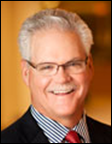
Michael Murphy (Sharp HealthCare) replaces David Feinberg, MD on the Cal INDEX Board of Directors.
Other
Family practice physician Edward Bujold, MD paints a pretty clear picture of the frustration he and his staff have experienced as a result of keeping up with the certifications, attestations, and other regulatory paperwork that go along with patient-centered medical home status:
“The NCQA and the Office of the National Coordinator say they are improving care, but I don’t see them improving their recognition processes in ways that relieve the burden of work placed on practices that have active quality improvement programs. I am considering walking away from the PCMH recognition process even though I believe in the practice transformation it is intended to guide. I realize that if we decide not to seek ongoing recognition as a PCMH, we will suffer financial hardship, but we have more important business at hand—taking excellent care of patients, improving our practice, and engaging with our patients in a meaningful way.”
A KQED Science article covers patients accessing their own data, the MUS3 dial-back of view / download / transmit requirements, the cost of obtaining copies of medical information, and the lack of provider incentive to provide it.
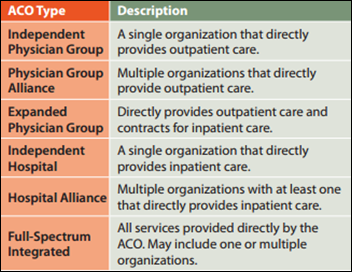
The Brookings Institution publishes a concise, easy-to-read paper on the “Origins and Future of Accountable Care Organizations.”

Mashable points out that every date this week is a palindrome (in the U.S.), and suggests we celebrate by “buying a race car, eating an evil olive or saying the phrase ‘Mr. Owl ate my metal worm’ over and over again.”
Contacts
Jennifer, Mr. H, Lorre, Dr. Jayne, Dr. Gregg, Lt. Dan
More news: HIStalk, HIStalk Connect.
Get HIStalk Practice updates.
Contact us online.
Become a sponsor.

Join @JennHIStalk and @LAlupusLady (Amanda Greene) for a discussion on the role of technology and patient communities, with a special focus on Lupus Awareness Month taking place in May. You can check out her background here, preview discussion questions below, and brush up on how to participate in a tweet chat towards the end of this post.

#HIStalking Discussion Questions
“As a Lupus patient for over 33 years, it is especially poignant for me to lead the chat during Lupus Awareness Month. I am a proud healthcare advocate and will travel to Washington, D.C. this June as part of the National Lupus Advocacy Summit, sharing my passion on Capitol Hill. I would like to focus the chat on how patients can take active roles in their health and advocacy, highlighting passion in action.”
Q1 How does your health impact your life?
Q2 How have you or your care team used technology to improve your health?
Q3 How can you become your own best advocate in improving your health?
Q4 How have you seen online communities turn patient concerns into action with impact?
Q5 What resources, tech, apps do you recommend for lupus patients/advocates?
Tweet Chat Instructions
It’s easy to join the Twitter conversation by logging into TweetChat, which automatically keeps you in the conversation by tagging all tweets with the #HIStalking hash tag. If you are unable to access the TweetChat room, simply search in Twitter for #HIStalking and follow the conversation. To contribute, be sure and tag your tweets with #HIStalking so they can be seen by other chat participants.
Contacts
Jennifer, Mr. H, Lorre, Dr. Jayne, Dr. Gregg, Lt. Dan
More news: HIStalk, HIStalk Connect.
Get HIStalk Practice updates.
Contact us online.
Become a sponsor.

The article about Pediatric Associates in CA has a nugget with a potentially outsized impact: the implication that VFC vaccines…